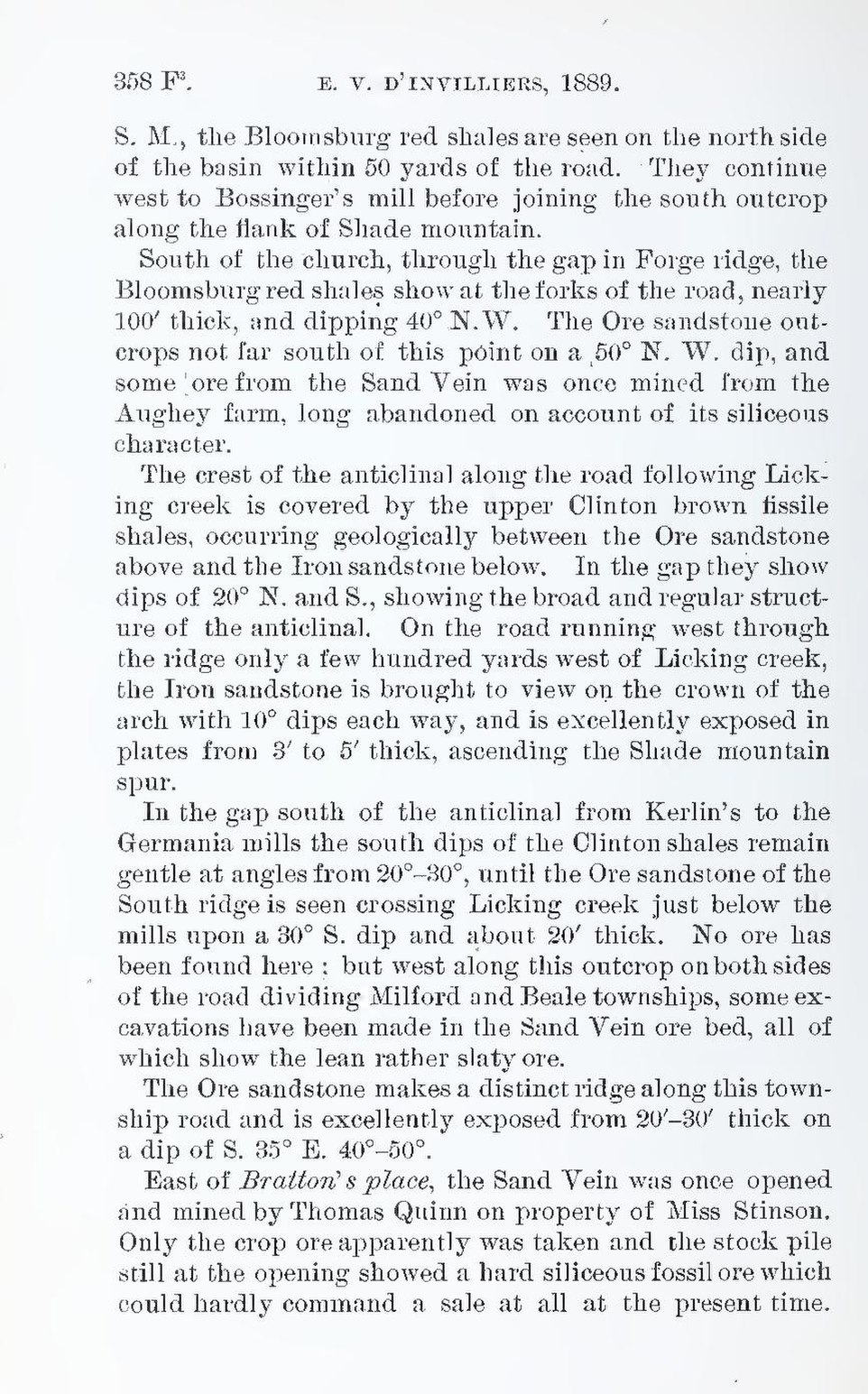S. M., the Bloomsburg red shales are seen on the north side of the basin within 50 yards of the road, They continue west to Bossinger’s mill before joining the south outcrop along the flank of Shade mountain.
South of the church, through the gap in Forge ridge, the Bloomsburg red shales show at the forks of the road, nearly 100′ thick, and dipping 40° N.W. The Ore sandstone outcrops not far south of this point on a 50° N. W. dip, and some ore from the Sand Vein was once mined from the Aughey farm, long abandoned on account of its siliceous character.
The crest of the anticlinal along the road following Licking creek is covered by the upper Clinton brown fissile shales, occurring geologically between the Ore sandstone above and the Iron sandstone below. In the gap they show dips of 20° N. and S., showing the broad and regular structure of the anticlinal. On the road running west through the ridge only a few hundred yards west of Licking creek, the Iron sandstone is brought to view on the crown of the arch with 10° dips each way, and is excellently exposed in plates from 3′ to 5′ thick, ascending the Shade mountain spur.
In the gap south of the anticlinal from Kerlin’s to the Germania mills the south dips of the Clinton shales remain gentle at angles from 20°–30°, until the Ore sandstone of the South ridge is seen crossing Licking creek just below the mills upon a 30° S. dip and about 20′ thick. No ore has been found here; but west along this outcrop on both sides of the road dividing Milford and Beale townships, some excavations have been made in the Sand Vein ore bed, all of which show the lean rather slaty ore.
The Ore sandstone makes a distinct ridge along this township road and is excellently exposed from 20′–30′ thick on a dip of S. 35° E. 40°–50°.
East of Bratton’s place, the Sand Vein was once opened and mined by Thomas Quinn on property of Miss Stinson. Only the crop ore apparently was taken and the stock pile still at the opening showed a hard siliceous fossil ore which could hardly command a sale at all at the present time.
